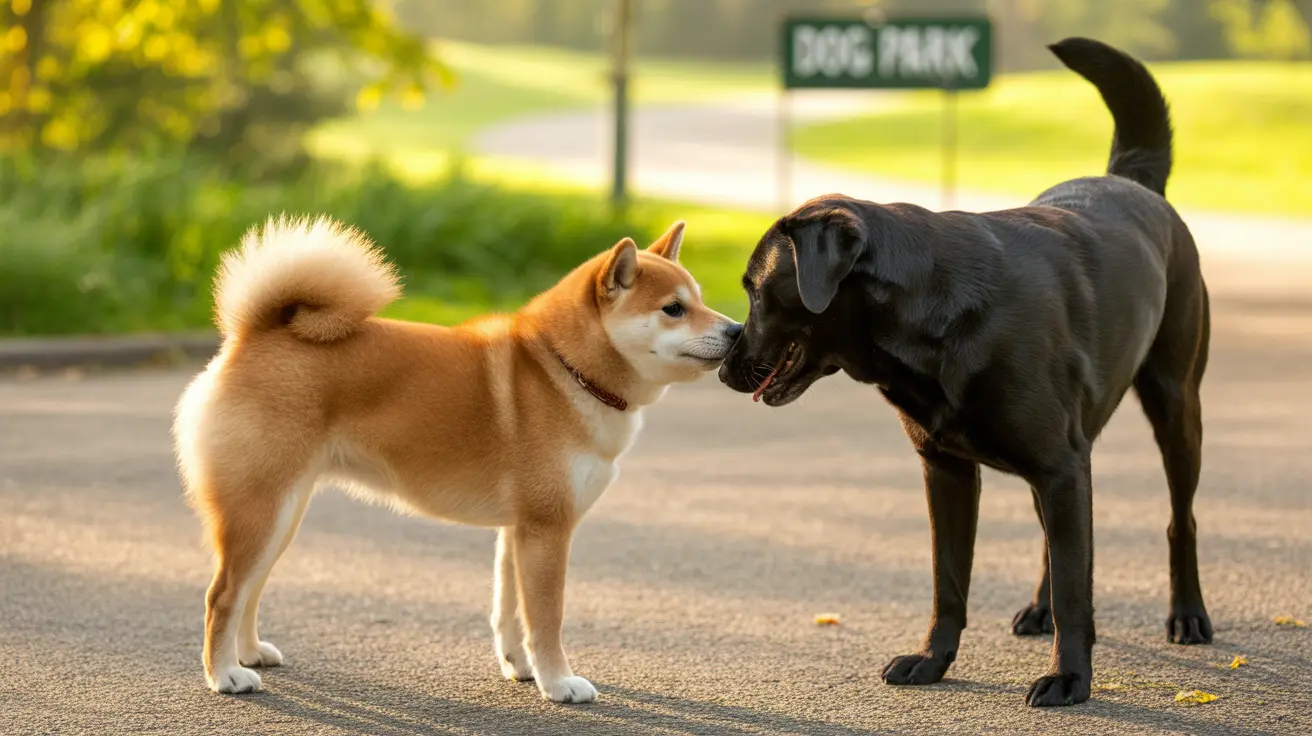Dogs have developed sophisticated ways of communicating with each other over thousands of years of evolution. From subtle body language to vocal cues and scent signals, our canine companions use a complex system of communication that allows them to express emotions, establish boundaries, and maintain social relationships. Let's explore how dogs truly understand each other and decode their fascinating communication methods.
Understanding how dogs communicate with each other isn't just fascinating—it's essential for pet owners, trainers, and anyone who works with dogs. This knowledge can help prevent conflicts, improve socialization, and enhance our ability to interpret our pets' needs and behaviors.
The Three Pillars of Canine Communication
Body Language: The Silent Conversation
Dogs primarily communicate through body language, using a sophisticated system of visual cues that other dogs can instantly recognize. Their posture, tail position, ear movements, and facial expressions all work together to convey specific messages:
- Tail positions: High and stiff (alertness/dominance), relaxed wag (friendly), low and tucked (submission/fear)
- Ear positions: Forward (interest), pulled back (submission/fear), relaxed (comfortable)
- Eye contact: Direct (confidence/challenge), indirect (submission/peace)
- Body posture: Tall and stiff (assertiveness), lowered (submission), relaxed (comfort)
Vocal Communication: More Than Just Barking
While dogs are known for their barking, they actually use a variety of vocalizations to communicate with each other:
- Barking: Can indicate excitement, warning, or attention-seeking
- Growling: Usually a warning or expression of discomfort
- Whining: Often signals stress, anxiety, or submission
- Howling: Used for long-distance communication or group bonding
Scent Communication: The Invisible Language
Dogs possess an incredibly sophisticated sense of smell, and they use scent markers to communicate various messages:
- Territory marking through urination
- Anal gland secretions during greetings
- Pheromone signals indicating emotional state or reproductive status
- Environmental scent marking through pawing or rubbing
How Dogs Process and Understand Each Other
Dogs have an innate ability to interpret and respond to other dogs' signals, though this ability is enhanced through proper socialization. When two dogs meet, they engage in a rapid exchange of visual, vocal, and olfactory information that helps them understand each other's intentions and emotional state.
This understanding happens on multiple levels:
- Immediate visual assessment of body language and intent
- Scent evaluation through nose-to-nose greeting and environmental investigation
- Vocal exchange to establish mood and boundaries
- Social positioning through subtle physical cues
Factors Affecting Canine Communication
Several factors can influence how well dogs understand each other:
- Early socialization experiences
- Breed-specific physical characteristics
- Individual temperament and personality
- Previous interactions and learned behaviors
- Health and stress levels
Frequently Asked Questions
How do dogs use body language to understand each other's emotions and intentions?
Dogs use a combination of tail position, ear movement, eye contact, and overall body posture to communicate emotions and intentions. They can quickly read these signals to determine if another dog is friendly, fearful, or potentially aggressive.
Can dogs interpret vocal sounds like barking and growling to communicate with other dogs?
Yes, dogs can interpret different types of vocalizations. The pitch, volume, and duration of barks or growls convey specific messages, from playful invitation to serious warning.
How important is scent communication for dogs when interacting with each other?
Scent communication is crucial for dogs, as it provides detailed information about other dogs' identity, emotional state, and territorial markings. It's often the first form of communication dogs use when meeting.
Why do dogs sometimes misinterpret each other's signals during play or meetings?
Misinterpretation can occur due to poor socialization, breed-specific physical limitations (like stubby tails or flat faces), or mixed signals being displayed simultaneously.
How can understanding dog-to-dog communication help in managing multi-dog households?
Understanding canine communication helps owners recognize early signs of stress or conflict, manage introductions effectively, and maintain harmony among multiple dogs by respecting their natural communication methods.
Understanding how dogs communicate with each other enriches our relationship with them and helps us create safer, more comfortable environments for our canine companions. By learning to read and respect their communication signals, we can better support their social interactions and overall well-being.






